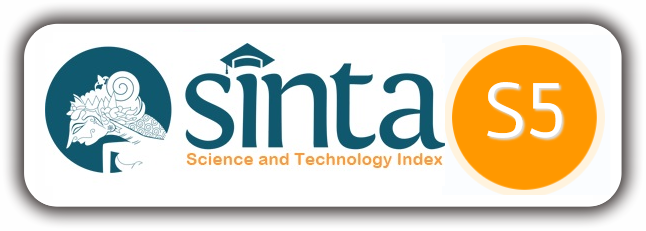Analysis of the Indonesian Government's Efforts to Reduce the Unemployment Rate: A Review of the Literature Study
DOI:
https://doi.org/10.59525/jess.v4i2.1105Keywords:
Government Policy; Unemployment; Labor Market; Policy Effectiveness; Literature ReviewAbstract
Unemployment remains one of the major challenges faced by Indonesia. The government has implemented various policies such as the Pre-Employment Card (Kartu Prakerja), vocational education, labor-intensive programs, and regulatory reforms through the Job Creation Law. This study aims to analyze the effectiveness of the Indonesian government’s efforts to reduce unemployment based on previous research using a qualitative descriptive approach through a literature review. The findings indicate that government policies have had a positive impact on improving skills and maintaining social stability; however, their effectiveness remains limited due to weak inter-agency coordination, skill mismatches between workers and industry needs, and a lack of sustainable employment opportunities. Therefore, stronger synergy among programs and better alignment between training and industrial demands are needed to ensure that government policies have a tangible impact on reducing national unemployment rates.
References
(BPS), B. P. S. (2025). Keadaan Ketenagakerjaan Indonesia Februari 2025. In Berita Statistik Indonesia (Vol. 05). Jakarta.
Creswell, J. w. (2014). Research Design: Qualitative, Quantitative, and Mixed Merhods Approaches (4th Editio). Thousand Oaks, California, USA: SAGE Publication, Inc.
International Labour Organization (ILO). (2016). Key Indicators of The Labour Market (KILM) (Ninth Edit). Geneva: International Labour Organization (ILO).
KH, H. A. A. W., Dea Dahlia, & Muhammad Nur Rianto Al Arif. (2023). Indonesian Government Policies In Overcoming Post-Covid-19 Unemployment From An Islamic Economic Perspective. Syarikat: Jurnal Rumpun Ekonomi Syariah, 6(2), 375–386. https://doi.org/10.25299/syarikat.2023.vol6(2).14685
Kurniawan, A., & Azis, F. A. (2021). ANALISIS EFEKTIVITAS KEBIJAKAN PEMERINTAH DALAM MENANGGULANGI PENGANGGURAN DI INDONESIA. 13(1), 167–186.
Lusiana, D., Moh Badrul Qomar, & Aldi Setiadi. (2024). Potret Strategi Dan Kebijakan Pemerintah Dalam Mengatasi Masalah Pengangguran Di Indonesia: Tinjauan Studi Literatur. Jurnal Liabilitas, 9(2), 22–30. https://doi.org/10.54964/liabilitas.v9i2.442
Madjid1, U., & Umar2, A. U. (2023). Jurnal academia praja. EFEKTIVITAS PROGRAM PELATIHAN KERJA PADA DINAS PENANAMAN MODAL, PTSP DAN TENAGA KERJA DALAM RANGKA MENURUNKAN TINGKAT PENGANGGURAN DI KABUPATEN BULUKUMBA PROVINSI SULAWESI SELATAN Udaya, 6, 109–128.
Munib, A., & Wulandari, F. (2022). Studi Literatur: Efektivitas MOdel Kooperatif Course Review Horay Dalam Pembelajaran IPA Di Sekolah Dasar. Pendidikan Dasar Nusantara, 7. https://doi.org/https://doi.org/10.29407/jpdn.v7i1.16154
Ningrum. (2025). Efektivitas Kebijakan Link and Match dalam Pendidikan Vokasi: Menakar Kesiapan Lulusan Memasuki Dunia Kerja. Jurnal Ilmu Manajemen Dan Pendidikan, 5(1), 51.
Oktaviana, Y., & Rahmawati, A. (2020). Dampak Krisis Ekonomi Pandemi Terhadap Peningkatan Pengangguran Pada Tahun 2020 di Jakarta Barat. Journal of Economic, 13(2), 202–207.
Pemerintah Republik Indonesia. (2020). Undang Undang Republik Indonesia Nomor 11 Tahun 2020 Tentang Cipta Kerja. In Peraturan.Bpk.Go.Id. Jakarta.
Prayudhani, O. (2020). PETA KETIDAKSESUAIAN KUALIFIKASI SEKTORAL DI INDONESIA. 15(2), 140–154.
Septiyanti, G. A. P., Putri, D. H., Zirani, N. D., & Pangestoeti, W. (2016). Peran Pemerintah dalam Mengatasi Pengangguran dan Kemiskinan dalam Masyarakat. Jurnal Kajian, 21(3), 221–236.
Torraco, R. J. (2016). Writing Integrative Literature Reviews: Usiang the Past and Present to Explore the Future. Human Resource Development Review, 15(4), 404–428.
Worldmeters. (2025). Indonesia Population (2025) - Worldmeters.
Downloads
Published
How to Cite
Issue
Section
License
Copyright (c) 2025 Wagimin Wagimin, Dewi Rini Anggraini, Putri Maysarah, Sobirin Sobirin, Erinaldi Erinaldi, Refdi Refdi

This work is licensed under a Creative Commons Attribution 4.0 International License.












